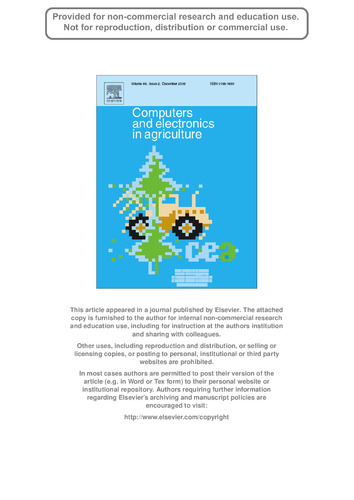Analysis of Andean blackberry (Rubus glaucus) production models obtained by means of artificial neural networks exploiting information collected by small-scale growers in Colombia and publicly available meteorological data
The Andean blackberry (Rubus glaucus) is an important source of income in hillside regions of Colombia.
However, growers have little reliable information on the factors that affect the development and yield of
the crop, and therefore there is a dearth of information onhowto effectively manage the crop. Site specific
information recorded by small-scale producers of the Andean blackberry on their production systems and
soils coupled with publicly available meteorological data was used to develop models of such production
systems. Multilayer perceptrons and Self-Organizing Maps were used as computational models in the
identification and visualization of the most important variables for modeling the production of Andean
blackberry. Artificial neural networks were trained with information from 20 sites in Colombia where the
Andean blackberry is cultivated. Multilayer perceptrons predicted with a reasonable degree of accuracy
the production response of the crop. The soil depth, the average temperature, external drainage, and the
accumulated precipitation of the first month before harvest were critical determinants of productivity.
A proxy variable of location was used to describe overall differences in management between farmers
groups. The use of this proxy indicated that, even under essentially similar environmental conditions,
large differences in production could be assigned to management effects. The information obtained can be
used to determine sites that are suitable for Andean blackberry production, and to transfer ofmanagement
practices from sites of high productivity to sites with similar environmental conditions which currently
have lower levels of productivity.

